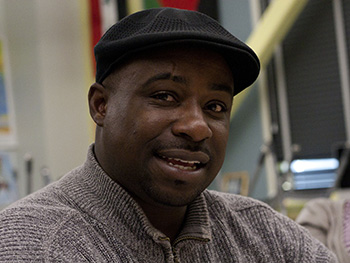The documentary film, “Red, White, Black and Blue,” following students in a rugby program at a K-12 public charter school in South Los Angeles, won “Best Documentary” at the Idyllwild CinemaFest on Thursday.
The film touches on the lives of 38 male and female high school rugby players, who participate in a rugby program at the Inner City Educational Foundation (ICEF) run by Director Stuart Krohn.
The rugby team traveled to New Zealand where they had the opportunity to learn about different cultures and dispel the negative views of South Los Angeles, while competing in rugby.
The program began ten years ago, and was started by Krohn, a former professional rugby player and English teacher. Over 4,000 students have been introduced to rugby through P.E. classes and after-school programs. Each year, 200 boys and girls compete on the tackly rugby teams, according to a statement by the ICEF Public Schools. Krohn organizes international trips for his players each year. Previous trips have allowed students to visit Hong Kong, England and South Africa.
“Rigby is a chance for our students to step outside the box and try something different. Our kids have the ability to suspend judgement and defy the stereotypes that other people might have of them,” said Krohn, in a statement.
The film will continue to appear in festivals around Southern California over the next several months. It will appear at the Pan African Film Festival at the Rave Baldwin Hills Plaza in Los Angeles on February 12, 2013.
For more information on the film, visit “Red, White, Black and Blue.”










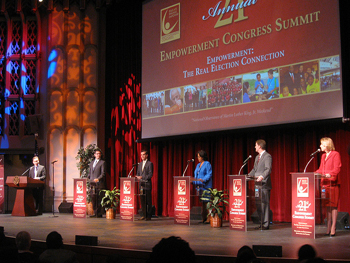 Mayoral candidates Emanuel Pleitez, Eric Garcetti, Jan Perry, Kevin James and Wendy Greuel answer questions at Empowerment Congress forum.
Mayoral candidates Emanuel Pleitez, Eric Garcetti, Jan Perry, Kevin James and Wendy Greuel answer questions at Empowerment Congress forum. 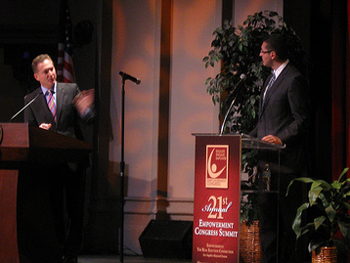 Mayoral candidate Emanuel Pleitez, right, answers a question from the moderator at the Empowerment Congress debate.
Mayoral candidate Emanuel Pleitez, right, answers a question from the moderator at the Empowerment Congress debate. 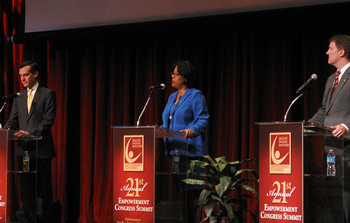 Mayoral candidate Jan Perry, center, answers a moderator’s question.
Mayoral candidate Jan Perry, center, answers a moderator’s question.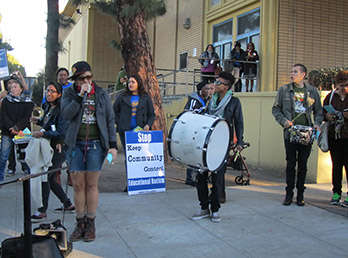
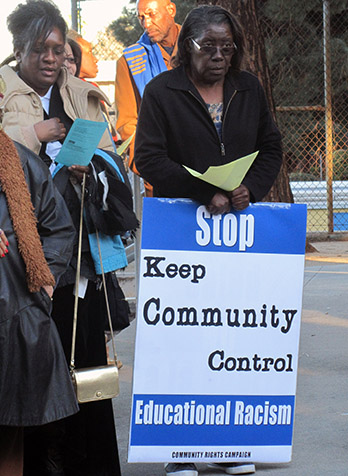 Those at the press conference expressed outrage at LAUSD for not consulting with parents, teachers, students and staff. According to Swafford, there was no prior knowledge or mention to the community by LAUSD of their intention to convert Crenshaw into a magnet school.
Those at the press conference expressed outrage at LAUSD for not consulting with parents, teachers, students and staff. According to Swafford, there was no prior knowledge or mention to the community by LAUSD of their intention to convert Crenshaw into a magnet school.
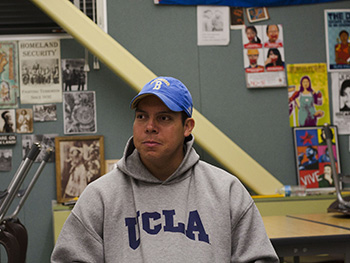
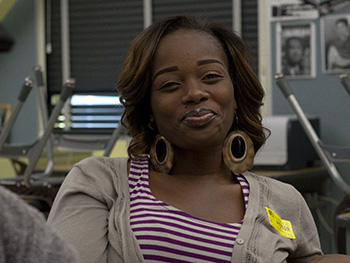 “There’s a degree of independence and an ability for us to take stances and take positions that other more prominent organizations can’t do because they’re tied to this or they’re tied to that,” said Njideka Obijiaku, an active member of the South LA Power Coalition and the Ma’at Institute for Community Change.
“There’s a degree of independence and an ability for us to take stances and take positions that other more prominent organizations can’t do because they’re tied to this or they’re tied to that,” said Njideka Obijiaku, an active member of the South LA Power Coalition and the Ma’at Institute for Community Change.